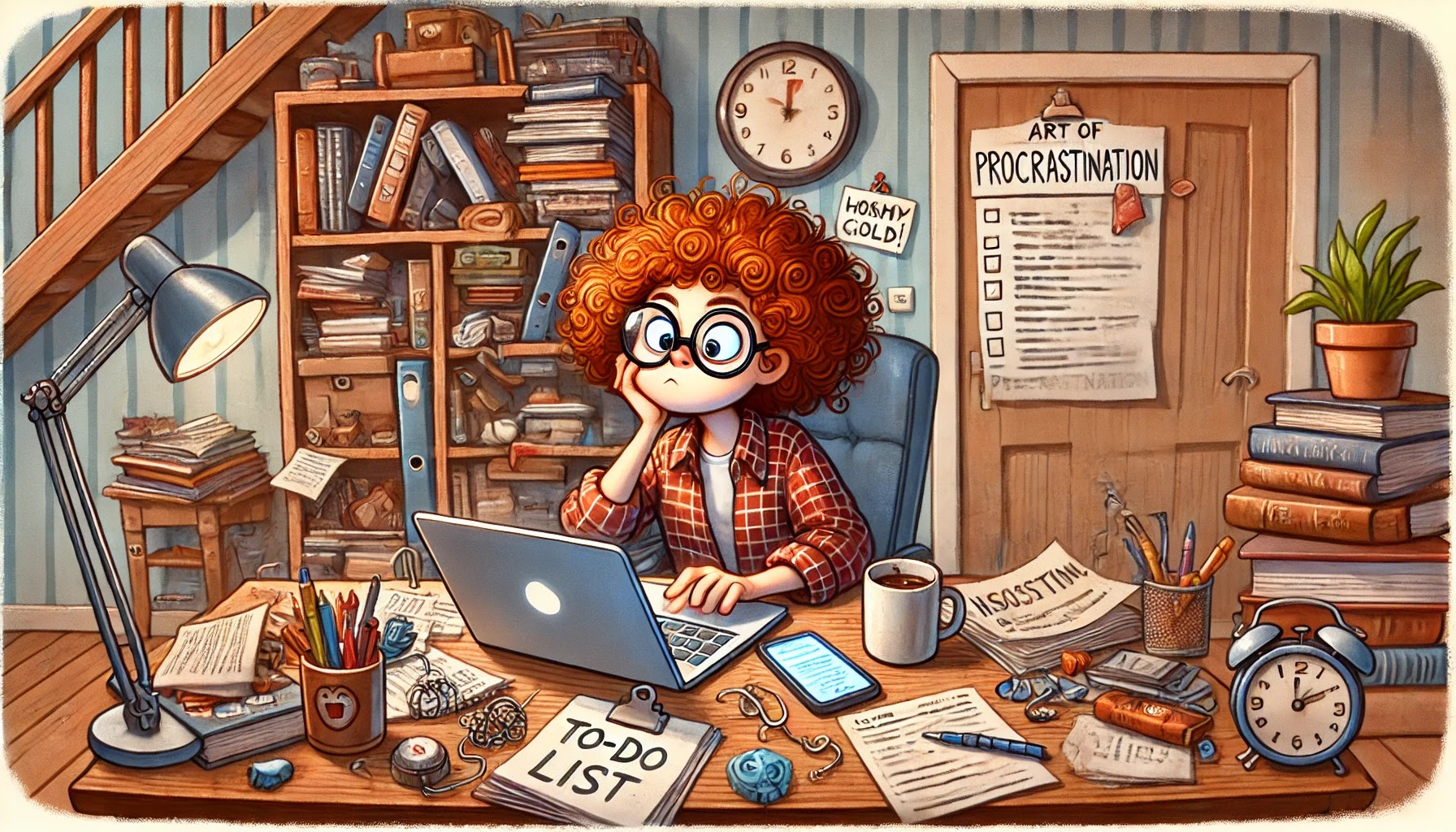Procrastination isn’t just a bad habit—it’s a finely honed skill. A craft. An art form. And like any artist, I have spent years perfecting my technique.
While some people might see procrastination as avoiding work, I prefer to think of it as an alternative approach to productivity. A scenic detour, if you will. The task will get done… eventually. Probably.
So, in the spirit of sharing my expertise, here’s a step-by-step breakdown of how to procrastinate like a true professional.
Step 1: Identify the Task That Needs to Be Done
The first step in procrastination is recognizing what you should be doing. Maybe it’s responding to emails, cleaning out the fridge, or writing that report that’s been on your to-do list so long it’s basically a part of your identity now.
A normal person would start tackling the task at this point. Amateurs. We, the Masters of Delay, do not take such an obvious route.
Step 2: Find an Extremely Important and Urgent Distraction
Here’s where the magic happens. Right as you sit down to start, your brain will kindly remind you of something else that is suddenly of dire importance.
- The Immediate Cleaning Impulse: “Oh no, I can’t possibly work in these conditions! I should probably reorganize my entire desk first. And maybe dust. And vacuum. And alphabetize my bookshelf.”
- The Random Google Spiral: “Wait… do jellyfish actually live forever? I should look that up. And while I’m here, maybe I should check the weather for the next two weeks. And read an article about whether or not I’m storing my peanut butter correctly.”
- The New Hobby That Can’t Wait: “What if I suddenly became really good at kickboxing? Should I learn right now? Probably.”
Step 3: Justify Your Procrastination with “Logic”
At this point, you know you’re procrastinating. But that doesn’t mean you’re going to stop. Instead, it’s time to convince yourself that what you’re doing is actually the better choice.
- “If I force myself to work now, it won’t be my best work. Better to wait until I’m really ready.”
- “I’ll be way more productive later after I take a quick break.”
- “The pressure of a last-minute deadline makes me work better, so really, this is just strategic.”
Step 4: Experience the Panic of Time Running Out
Ah, yes. That thrilling moment when you realize you’ve pushed it too far. The deadline is looming. The fridge is still a mess, the report is still unwritten, and you’ve somehow learned an alarming amount of useless trivia instead of doing what you actually needed to do.
This is where you suddenly gain superhuman focus and complete the task in a fraction of the time you originally had. (Was it stressful? Yes. But was it also impressive? Also yes.)
Step 5: Promise Yourself That Next Time Will Be Different
You finish the task just in time, breathe a sigh of relief, and solemnly swear that next time, you will start early. You will be responsible. You will not put yourself through this again.
(You are lying to yourself.)
Final Thoughts
Procrastination is not just a delay tactic—it’s a lifestyle. And while the logical side of me knows I should be better at time management, the chaotic side of me has accepted that I will, in fact, be rearranging my bookshelves instead of starting my next big project on time.
Now, if you’ll excuse me, I need to go research the history of the high five instead of answering my emails.














